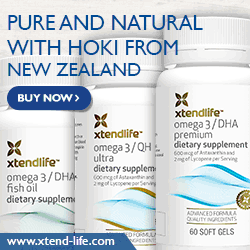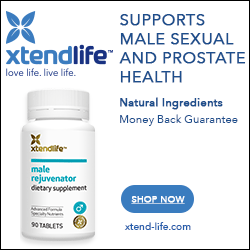Supplement Ad Claim of the Month: “High ORAC”
Antioxidants are “in” – and “superfoods” and supplements are everywhere you look. Naturally, each new one is better than all the others that came before it. And how do you know this? Is it because of human clinical studies? Nope. It’s because it has the highest ORAC score. As one supplement ad sez:
“Fruits and vegetables tend to have the highest ORAC values. Per 100 grams – Apples score a 218, Bananas a 221, blueberries 2,400. And what about fresh Acai? Acai has an amazing 5,500 ORAC score.
Here’s another sample of the spin:
“A new laboratory test known as ORAC (Oxygen Radical Absorbance Capacity) was developed by USDA researchers at Tufts University to rate the antioxidant levels of fruits and vegetables. It ranks the Ningxia wolfberry, also known as the Goji berry as the best antioxidant food in the world.”
In other words, “high ORAC” = “good.” And if high ORAC veggies and fruits are good for you, then so must be the juices, powders, concentrates and capsules made from them, right?
Hmmm…maybe, maybe not. Let’s take a closer look at what ORAC values really mean, and – more importantly – what their limitations are.
To begin with, ORAC stands for “Oxygen Radical Absorbance Capacity.” It’s a “test tube” (in-vitro) analysis that was developed by the USDA, and is a standard assay for measuring the antioxidant capacity of a food source. The ORAC test uses a fluorescent probe that can be damaged by free radicals. The change in fluorescence intensity is a measure of the amount of the damage. The effectiveness of an antioxidant is reflected by the protection it offers against that change. The results are compared to a standard – usually “Trolox” (a form of water soluble vitamin E) and expressed in terms of “Trolox equivalents.”
So far so good…so what are the problems?
1. The original assay was developed to detect hydrophilic (i.e., water-soluble) antioxidant capacity against peroxyl radicals. There are, needless to state, other types of free radicals, and it’s entirely possible for an antioxidant that is extremely effective against non-peroxyl radicals to have a low ORAC score. Carotenoids are an excellent example. Carotenoids such as beta-carotene are highly effective at quenching singlet oxygen radicals, yet perform poorly against peroxyl radicals. Alpha-lipoic acid is another excellent antioxidant that has a low ORAC value.
2. The ORAC assay is an in-vitro test. Thus, there’s no guarantee that a food or supplement with a high ORAC score will be effective in a body. Bioavailability may be limited, for example; or the active compound(s) may be broken down or otherwise modified. Such metabolites may be more, or less, effective than the parent compound(s).
3. A high ORAC score can be misleading, as antioxidants with lower scores may still have health effects specific to particular organs or tissues. For example, the carotenoids lutein and zeaxanthin are useful for preventing age-related macular degeneration (AMD), yet spinach, which is an excellent source of these compounds, has an ORAC value of “only” 1515 (100g, raw), whereas an equivalent amount of raw blueberries come in at 6552. Thus, when it comes to maintaining health/preventing disease, the highest scoring foods aren’t necessarily the best ones.
4. Processing may alter ORAC values. Antioxidant activity can be lost via heating, chemical treatments and/or prolonged storage. For example, alkali treatment of cocoa powder can cut antioxidant activity in half. Broccoli antioxidants can be lost during cooking.
The problem is that most producers of high-ORAC products don’t tell you when the product was tested. A “superfruit” juice tested prior to retort sterilization and bottling may have a very different value by the time it’s distributed at the retail level.
5. ORAC values are not yet tied to clinical outcomes. Epidemiological studies have shown that vegetable and fruit intake are linked to reduced risk of various degenerative diseases. We do not, however, know what a “good” ORAC score is. Currently, scientists recommend consuming the equivalent of 3,000 – 5,000 ORAC units/day, but it would be a mistake to assume that – say – a single serving of a “superfood” or supplement is all that’s needed to remain healthy. As alluded to above, not all antioxidants are alike.
6. A high ORAC food may also have deleterious effects. For example, an interesting study on the effects of eating grapes and raisins was recently conducted in human volunteers. This 4 week study found an increase in serum antioxidant activity over time, but also recorded “significant nonpositive changes” immediately post-consumption, probably due to carbohydrate-induced postprandial oxidation. High blood sugar (hyperglycemia) is itself a trigger for oxidative stress (via the production of superoxide), so chronic consumption of high-ORAC/high-sugar foods or juices may also contribute to the problem that people consuming them are trying to solve!
In other words, it’s not so simple as “high ORAC” = “good.” Certainly, the ORAC assay is a great tool for making comparisons between foods, and will help us learn more about the relationships between dietary antioxidant intake and health. But for most functional foods and supplements, it’s just a marketing term. Rather than spending big $$$ on the latest “superfoods” and supplements, you’ll be better off choosing from a variety of high-ORAC whole foods. Right now, that’s what the science supports.




May 19, 2008
Thanks for explaining this so concisely, Elissa!
January 29, 2009
Thanks for an excellent article. I am currently using and marketing a chewable product that has never promoted an ORAC value. Kind of bothered me a little until I read your article. It does contain many of the antioxidants that you mention in your article that score low on the ORAC test. Thanks again for a tremendous article
Michael Lindsay
July 29, 2010
Outstanding article! However, in the situation where I am considering ORAC, is somewhat different. I am looking to design a supplement using a fruit extract, and searching for a key ingredient. So I am only comparing ORAC between suppliers of the “identical” ingredient. How does this discussion affect my situation… is higher ORAC better or not relevant?
July 29, 2010
@Malcolm: are you looking at this decision from a consumer health perspective, a product formulation perspective, or a marketing perspective? “Better” is often a relative, rather than an absolute judgement.
From a scientific/health perspective, there’s exactly zero hard evidence that ties higher and higher ORAC scores with long-term health outcomes. This is especially true when it comes to utilizing supps vs. foods (which are quite complex). Thus, the difference in ORAC scores between the two ingredients is probably not relevant.
From a product formulation POV, if your goal is to produce a supp that delivers a defined ORAC level, then it makes some sense to choose a higher-scoring extract, since this will enable you to use less of it to hit your target. Using a higher-ORAC ingredient could be a) more cost-effective; and/or b) offer you greater flexibility w/respect to additional ingredients (which you may wish to use to improve the overall nutrient profile, or – in the case of a chewable/drinkable blend – improve palatability).
So, the higher-ORAC ingredient might be “better” under these circumstances.
On the flip side, if you’re concerned with trying to find the highest-quality ingredient possible, I would not automatically assume that the higher ORAC extract is the best one. I would want to see details on the manufacturing process + run an independent check for contaminants and/or adulterants (higher ORAC levels can be achieved by spiking) and levels of specific “key” phytochemicals associated with that fruit (for example, pterostilbene and anthocyanidins in blueberry extract).
I would also want to know where the supplier’s ORAC scores came from. Natural products vary in composition from batch-to-batch, after all – so are the numbers you’re looking at based on individual lots currently available for purchase; based on a specific product standardization process – or based on a single, one-off test? Likewise, I would want to be sure that the laboratory methods and units used by both suppliers match, so that the comparison is valid.
So, from this angle, the difference in ORAC values is meaningless, in the absence of other info about ingredient quality. ORAC is a non-specific test that tells you nothing about the content or activity of specifc compounds, after all… thus, it’s flawed as a standalone measure.
This leaves us with marketing… and from that perspective, the higher scoring one can certainly be spun as “better” – but then again, that’s why this post was written in the first place… the point was to counter that (potential) misperception. 😉
October 30, 2010
Hey, about time someone got this whole ORAC definition straight. This makes me think that we better check on the process of our product to make sure our 10,000 orac claim is valid. Thanks for the tip.
October 30, 2010
Well, thanks for being a conscientious manufacturer, Scott. 🙂